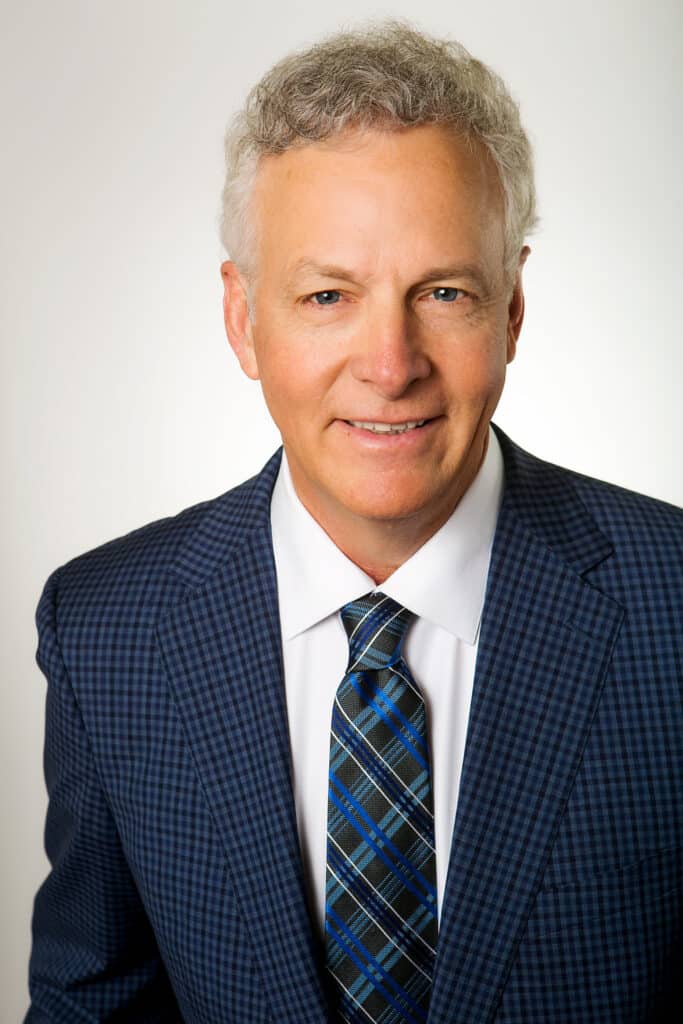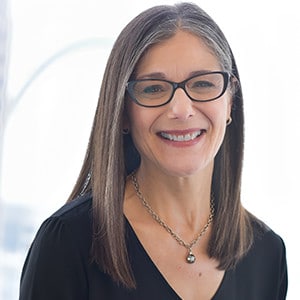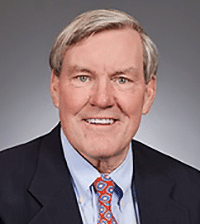A Conversation With NH&RA’s Distinguished Career Award Winners
Three Longtime Affordable Housing Professionals Offer Their Thoughts on NH&RA’s Work, Their Accomplishments, and Advice for Those Starting Careers in Affordable Housing

By Ethan Finlan
9 min read
At last winter’s annual conference, National Housing & Rehabilitation Association honored three longtime leaders in the affordable housing sector with its “Distinguished Career” award. I spoke with each of the recipients: John Rucker, founder of Merchant Capital and later a senior figure at Stifel Institutional following its acquisition; Claudia Brodie, senior vice president at McCormack Baron Salazar, whose career has centered on pre-development and development initiatives; and John Gahan, a Boston-based attorney recognized for his expertise in housing law and legislative documentation. All three expressed deep gratitude to NH&RA for supporting their professional journeys and strengthening industry collaboration. They also reflected on the key milestones that have shaped their careers in affordable housing.

What are your thoughts on receiving the Distinguished Career Award?
John Rucker: I’m humbled and surprised to be recognized with this award. After a 47-year career, this was greatly appreciated.
Claudia Brodie: I’ve been with the company for 45 years, so I’ve grown up at MBS. I was unaware that I was receiving an award when I attended NH&RA’s Annual Meeting, so I was surprised. I was particularly proud to be in the company of such esteemed individuals as John Gahan and John Rucker. Besides that, I wouldn’t have a career without the support of all my teammates. Every step of my career felt like a team effort.
John Gahan: One of honor and gratitude, and I thank NH&RA for considering me. But temper that with, there have been a lot of great leaders and directors in the organization who deserve this more than I. Some have passed away, and some have retired and are no longer active.
To the extent that this is a reflection that I contributed positively, it makes me feel good because that’s what I’ve tried to do. If I’ve made it a little better or a little easier for somebody else along the line, then I’ve done my job.
What would you say are the highlights of your career?
JR: I would say that, for the last 11 years, my firm (Merchant Capital) led the country in the number of affordable housing debt issuances closed. In 2024, my team closed over 130 affordable housing bond issues.

CB: I started my career as a property manager for a senior community, and I remember the building opening. I remember moving residents in and helping them get settled. It struck me as a compilation of many things coming together. It was quite remarkable and gave me the strength to continue to work through all the challenges (our COVID-19 pandemic response will never leave me) to keep our families first.
JG: I got involved with NH&RA more than 20 years ago and found that it was a place where there were a lot of smart people who were committed and passionate about producing housing. I liked the fact that they came from all different sides: there were construction people, bankers, investors, state housing financing agencies, as well as developers, lawyers, and accountants. The only way this worked was if everybody took care of their own business and worked together with the other businesses to make something happen. No one was 100 percent in charge, and it required “give and take,” understanding what the goal was and where all the pieces fit in. I found that exciting. And I would say that the real highlight is to have navigated that as a platform and to be able to work with all sorts of different disciplines that all end up achieving the goal of creating housing for people who need it.
The other highlight was having Tax Credit Advisor ask if I would write articles, and getting positive feedback from my colleagues on my articles.
What project or initiative are you most proud of?
JR: I am particularly proud of our efforts in the rural housing space. Over the last ten years, my firm pioneered the concept of pooling many smaller rural projects into larger debt issuances. I led this effort in closing over 25 such pools. Financing is tough for smaller rural projects, so larger pools created the opportunity to spread the costs out, making such projects feasible.
CB: It’s kind of like asking, “Who’s your favorite child?” Each one is different and has its unique qualities for the community and the families.
The Choice Neighborhood Initiative program was a compilation of what we had considered over the years, starting with HOPE VI, to focus on housing and bring together different city and state governments to build communities that include schools, services, and shopping. The Choice Neighborhood Initiative program forced the whole community to work together.

JG: A developer who had several properties in a particular state was having difficulty with their investors, concerning a nonprofit ROFR and an exit plan. The developer got my name as a recommendation. Over several years, we made deals that everybody liked. We worked back and forth, and it was successful for everyone.
What am I most proud of? The ability to take on an out-of-state client that I had no relationship with and who was concerned about getting through the nonprofit exit process, and being able to help them out – never having an issue with their investor.
How do you think NH&RA adds value to the affordable housing and development sectors?
JR: Members of NH&RA are the leaders in their respective firms in the affordable housing space. Coupled with the content of the panels, NH&RA helped catapult my efforts nationally.
CB: NH&RA has this innate ability to bring the doers and thinkers to the table. It chose locations that get leaders and companies to come together. So, you have all these competitors in a room together talking honestly about challenges, what’s working, what’s not working, and NH&RA is the one facilitating that.
Fifteen years ago, when the HOPE VI properties were struggling because funding was not keeping up with the needs of the public housing units of the properties, NH&RA brought multiple members together, and we started working with the Department of Housing and Urban Development. It was the precursor to the RAD program, and I credit NH&RA for providing this platform for us to work through solutions. HUD was receptive because NH&RA was in Washington, testifying to Congress and meeting with key HUD officials. NH&RA was seen as a respectable and professional contact that allowed the information to flow, to keep the solutions moving.
JG: One of the biggest reasons for any success I’ve had in the industry is being involved with NH&RA. I got to know the people on the cutting edge of legislation and policy. NH&RA has had an incredible run of organizational leaders between Peter Bell, president and CEO, Thom Amdur, former president, and now Kaitlyn Snyder, managing director. The value is that NH&RA brings together all the pieces of the industry and lets them collaborate. And it works. I’m not saying it’s the only organization that does that. But that’s the value: Getting to know the people in the organization makes doing business easier. If it’s easier for you, then it’s better for your clients.
What advice do you have for individuals just beginning their careers in affordable housing?
JR: My advice would be to go to conferences supporting affordable housing. Sit in on panels, and by doing so, you can get to know the mechanics of this industry. Also, I believe life is a contact sport. Network with other professionals, and your career over time will skyrocket.
CB: My answer is different now than it would have been a couple of years ago, and that’s because of the headwinds we’re facing with overall funding and financial challenges at our sites.
The future of our business is about sustainable practices and continued advocacy for supporting affordable housing programs. It takes everyone working together, constantly thinking about the big picture as they move through their daily work.
Even as you’re producing housing, you must stay hyper-focused on preparation and be able to take a 10,000-foot view of not only how you operate on this year’s budget, but what this year’s operations mean for the coming years. Always keep the family and the preservation of the asset in mind, even as you develop something new.
Also, understand what goes into making an operation run, and how important that support is, so that you include those important pieces of the puzzle.
JG: Get involved, stay involved, and ask questions. Frequently, I talk about reading documents carefully and not being afraid to ask questions. But the biggest thing is, don’t make it all about work. Participate with people as they are more than just the drafter of a particular document. Understand their business and who they are, what’s important to them. If you understand what’s important to the other side, it makes it a lot easier to get to “yes.”
Go to NH&RA meetings and introduce yourself. Stay connected to people. If you want to get things done in this world, collaborate. The bottom line, get involved and stay involved.
Advertisement
How have you navigated emerging challenges, such as supply chain difficulties and federal subsidy uncertainty?
JR: As roadblocks to successful projects appear, there are always creative solutions to solve unforeseen problems. Throughout my career, I’ve seen every roadblock possible. You have to be patient and seek the help of others. Perseverance is an important quality.
CB: We are thinking about how we underwrite our deals in a different way now. We can’t always predict what’s going to happen next, so developing the right reserves and understanding the cash for unforeseen needs is more critical than ever.
JG: The way I navigate issues is to try and figure out what everybody in the mix has as a goal, and to see where interests overlap.
The “why” is always more important to me than the “what.” When I navigate through challenges, subject matter doesn’t matter. I ask myself, “Why is this a problem on this side? Why is it not a problem on that side? How did we get to this? What was before, what’s after?” If you understand that, then you’ll be able to prioritize the steps that it takes, where you do the least amount of harm, and where you do the most amount of good.
If you’re going to do the job right, you have to figure out what’s in it for everybody in the deal and how to create a jigsaw puzzle where the respective pieces fit together for everyone.

